Many traders use indices in their trading. The stock market offers a huge variety of indices such as the S&P 500, NASDAQ, Dow Jones, etc. They provide a picture of the state of the economy in a particular industry or country.
What about the foreign exchange market? Here, the main assistant is the US Dollar Index (Basic Dollar Index, USDX). The US dollar is the world’s reserve currency, which means it is widely traded and is of interest to traders worldwide. For example, it is used in 80-90% of all Forex trading.
On the platform, the Dollar Index can be found in the FTT section under the Indices tab. On other platforms, you may find this instrument under USDX or DXY tickers.
Here is the US Dollar Index chart:
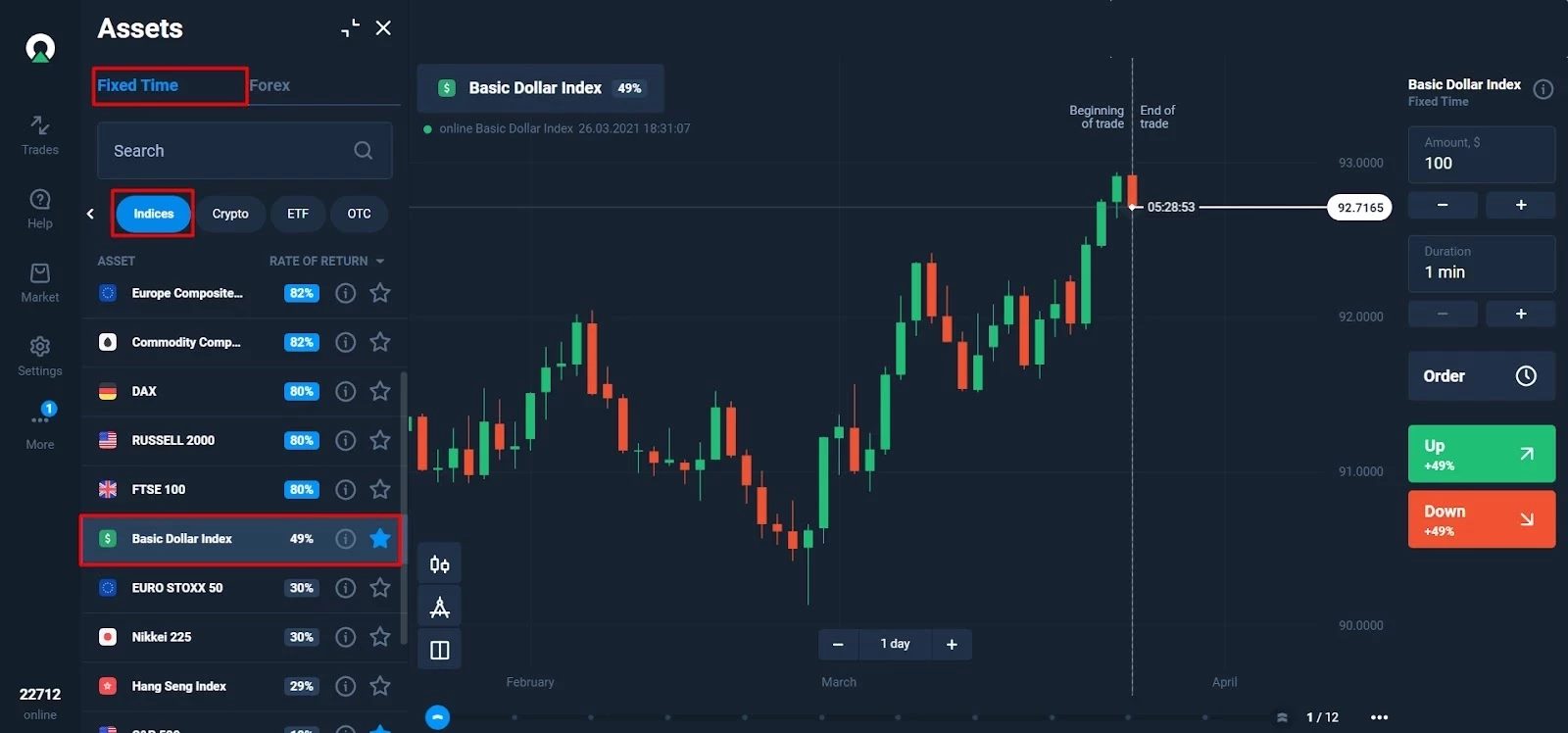
The Basic Dollar Index is a measure of the strength of the US currency. It includes a basket of foreign currencies whose value is compared to the value of the US dollar. Many professional traders follow its changes because it is often the strengthening or weakening of the dollar that sets the markets in motion.
How Is the Dollar Index Calculated?
The index is calculated as a weighted geometric mean of the currency basket. The index basket includes six currencies: euro (EUR), yen (JPY), pound sterling (GBP), Canadian dollar (CAD), Swedish krona (SEK), and Swiss franc (CHF). The list corresponds with the countries that are the main trading partners of the United States. They have a different economic impact on the US economy, so each currency is assigned a specific share:
- euro — 57.6%.
- yen — 13.6%.
- pound sterling — 11.9%.
- Canadian dollar — 9.1%.
- Swedish krona — 4.2%.
- Swiss franc — 3.6%.
The final formula for the index looks like this: USDX = 50.14348112 × EURUSD-0.576 × USDJPY0.136 × GBPUSD-0.119 × USDCAD0.091 × USDSEK0.042 × USDCHF0.036
When and Why Was the Dollar Index Created?
JP Morgan developed it in March of 1973. If you substitute the exchange rates for March 1973 in the formula, you get precisely the value of 100. It turns out that the Basic Dollar Index shows the change in USD in relation to a basket of currencies compared to the 1973 quotes.
An index value of fewer than 100 points indicates a weakening of the dollar whereas more than 100 points indicates an increase in the value of the US dollar compared to 1973. At this point, there was a transition to floating exchange rates. The Bretton Woods agreement, when the US dollar was tightly pegged to the value of gold ($35 per troy ounce), ended, and the gold standard has sunk into oblivion.
After adopting the Smithsonian Agreement, the range of currency fluctuations expanded from 1% to 4.5%. Subsequently, the Jamaican system was implemented, which assumes the market formation of exchange rates. The index was revised once again in 1999 when the euro was introduced. Thus, 19 more Eurozone countries were taken into account in the calculation, plus nine countries that use the euro but are not Eurozone members.
How to Use the Dollar Index in Trading
The Basic Dollar Index can be used to analyze the Forex market. This is similar to how stock market investors use indices to determine the general direction of the markets. The Forex market is highly dependent on the fluctuations of the US currency, and you have to understand this if you are going to make fundamental analysis as a basis for your trades.
Suppose you trade currency pairs using USD as one of the currencies (EUR/USD, GBP/USD, USD/CHF, etc.). In that case, the Basic Dollar Index will be an indispensable assistant for determining the trend, levels, and movement potential.
It can be argued that the index is highly correlated with such currency pairs. The correlation will be positive if USD is the asset’s base currency (comes first in the pair). Below is an example of a positive correlation with USD/CAD and the US Currency Index:
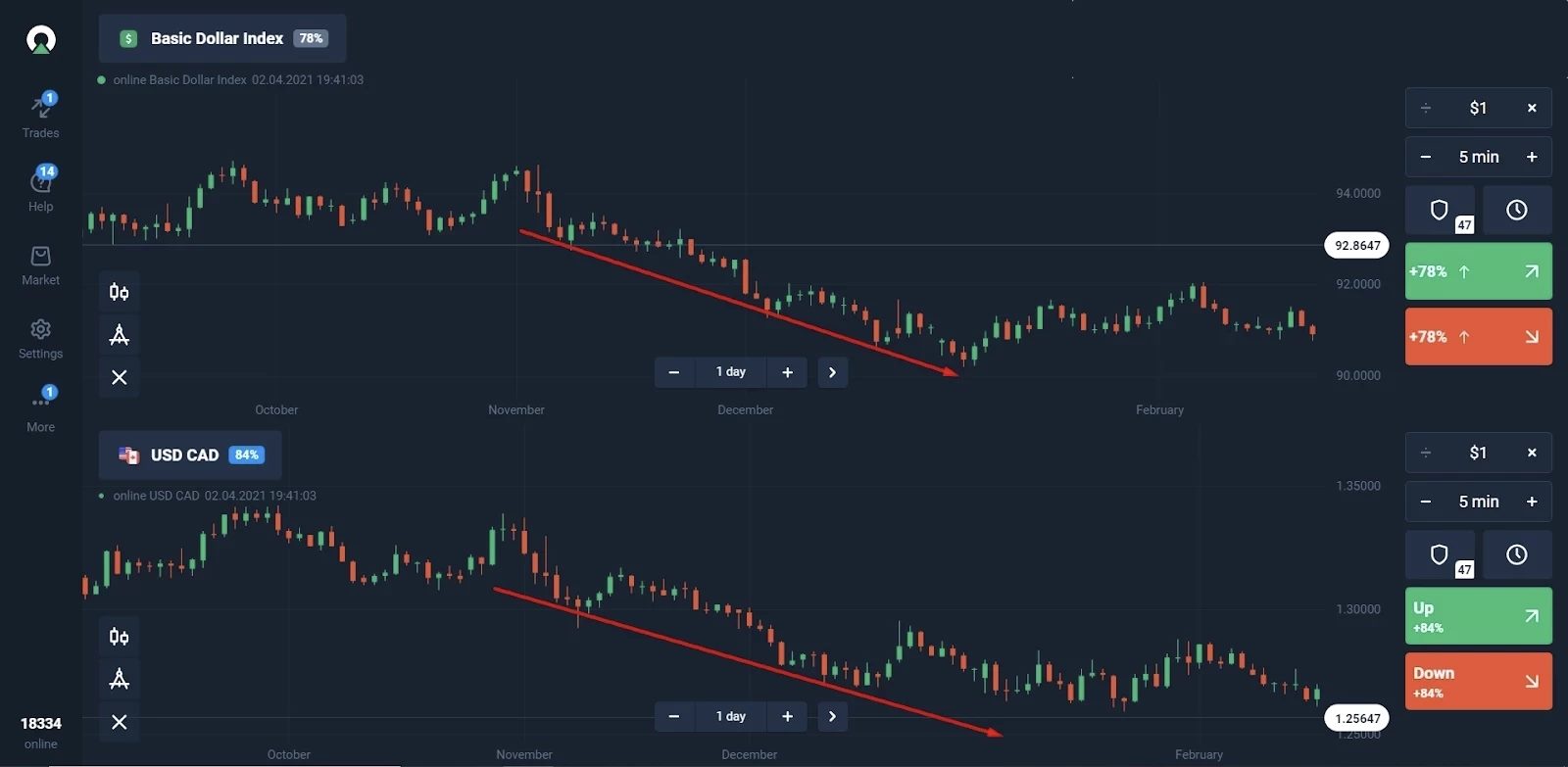
If USD is the quoted currency (second place of the pair), then the correlation of such an asset with the Basic Dollar Index will be negative. The greatest negative correlation is observed with EUR/USD since the weight of the EUR in the index is 57.6% as illustrated here:
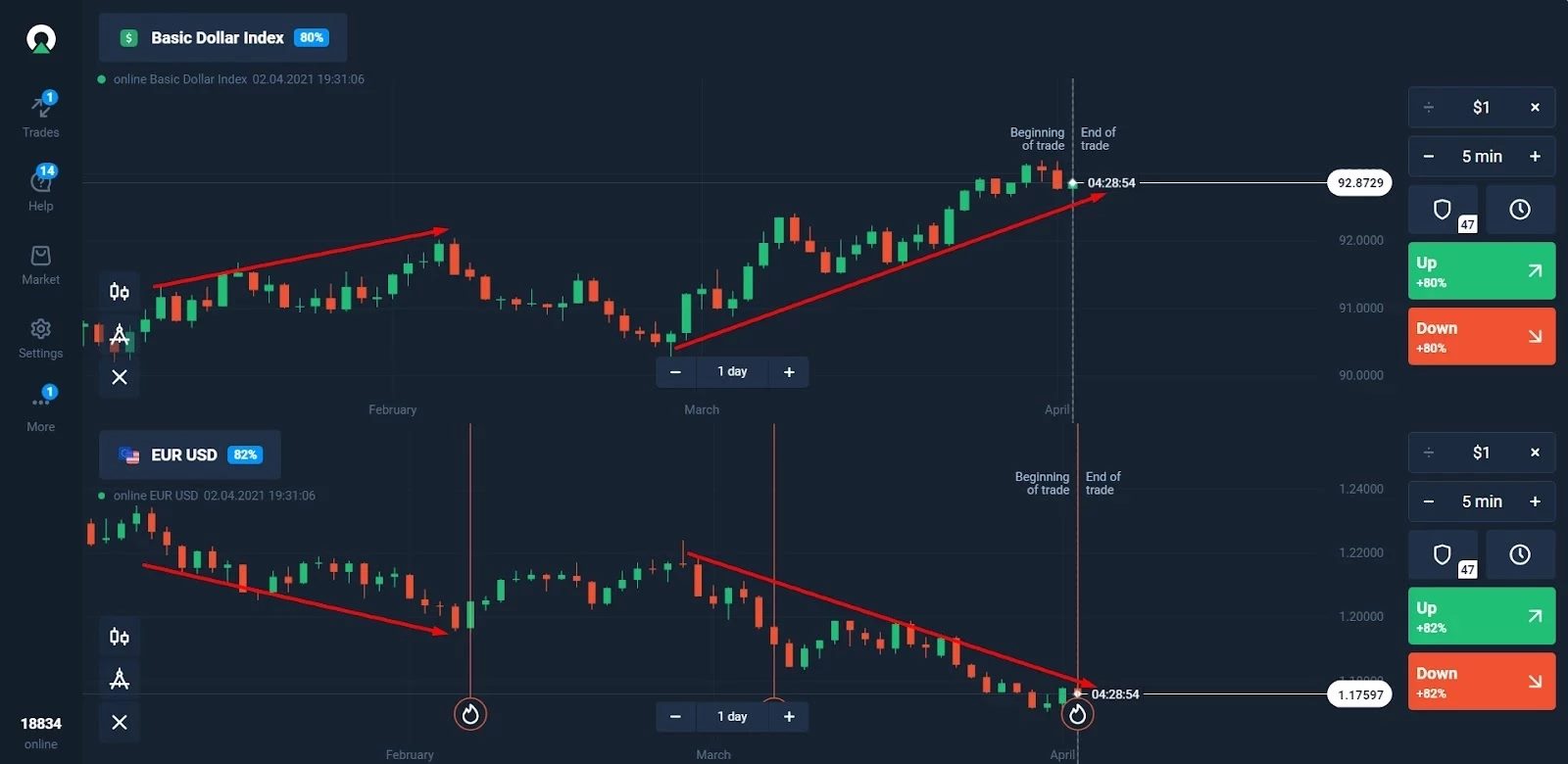
There are two main methods to trade with the US Dollar Index. Let’s analyze them using the example of trading with the EUR/USD pair:
Method 1. From time to time, movement in the index anticipates movements in major currency pairs. The Basic Dollar Index may break through a strong support or resistance level or simply start an active move. If a similar movement is not observed in the EUR/USD, then there is a reasonably high probability that it will start soon (in the opposite direction). You may trade EUR/USD lag using the FTT tool by analyzing the chart on a timeframe of at least 1 hour.
Method 2. The primary strategy for trading with the Basic Dollar Index is to identify trend lines and support and resistance levels. You should open positions for an increase in the EUR/USD:
- When the Basic Dollar Index is in a bearish trend and touches the trendline.
- When the index is near a strong resistance level and prerequisites for a reversal are visible such as reversal candlestick formations or indicator readings.
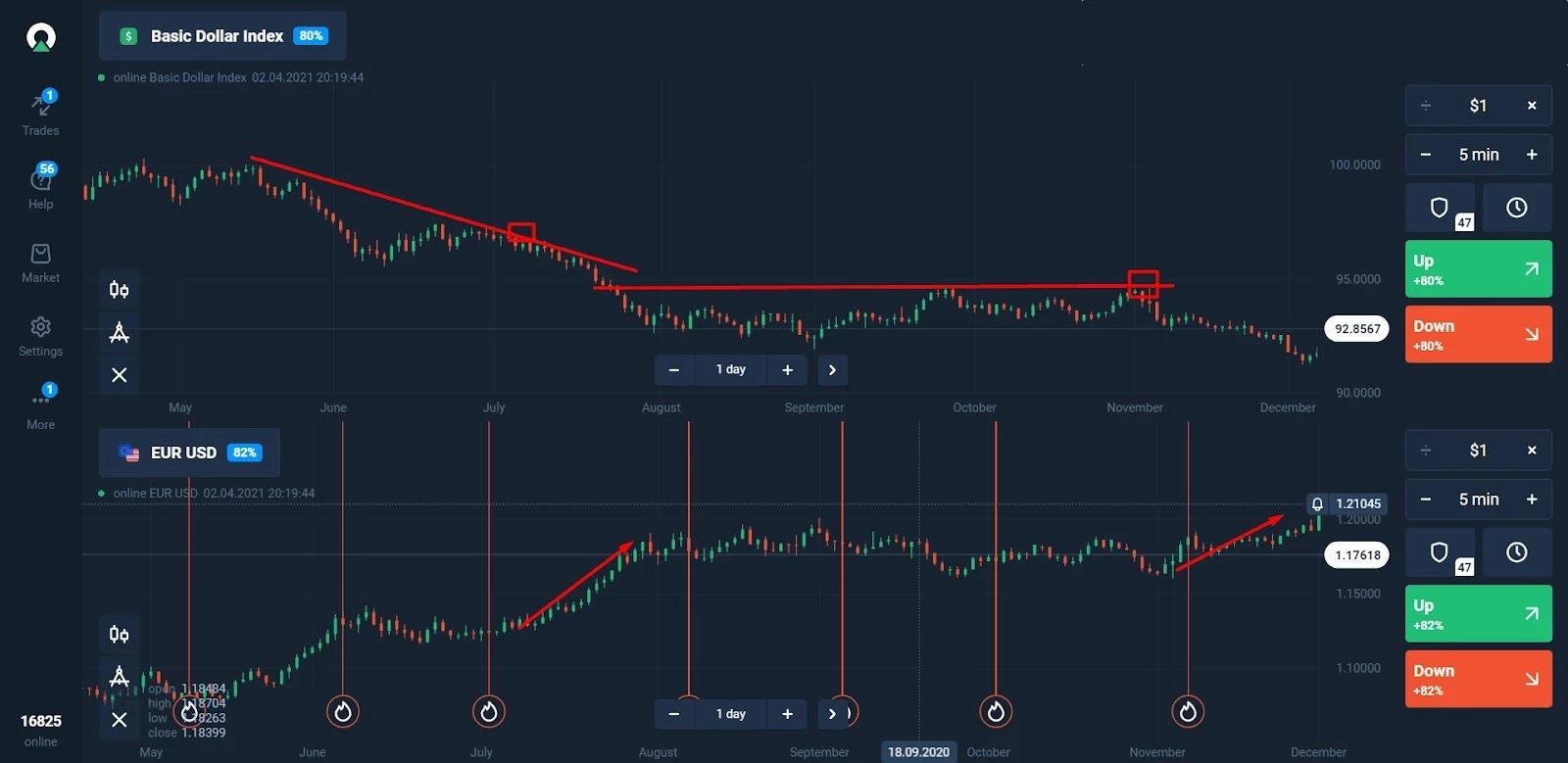
Downward positions in EUR/USD should be opened:
- When the index is in a bullish trend and touches the trendline.
- When the Basic Dollar Index is near a strong support level, and prerequisites for a reversal are visible such as reversal candlestick formations or indicator readings.
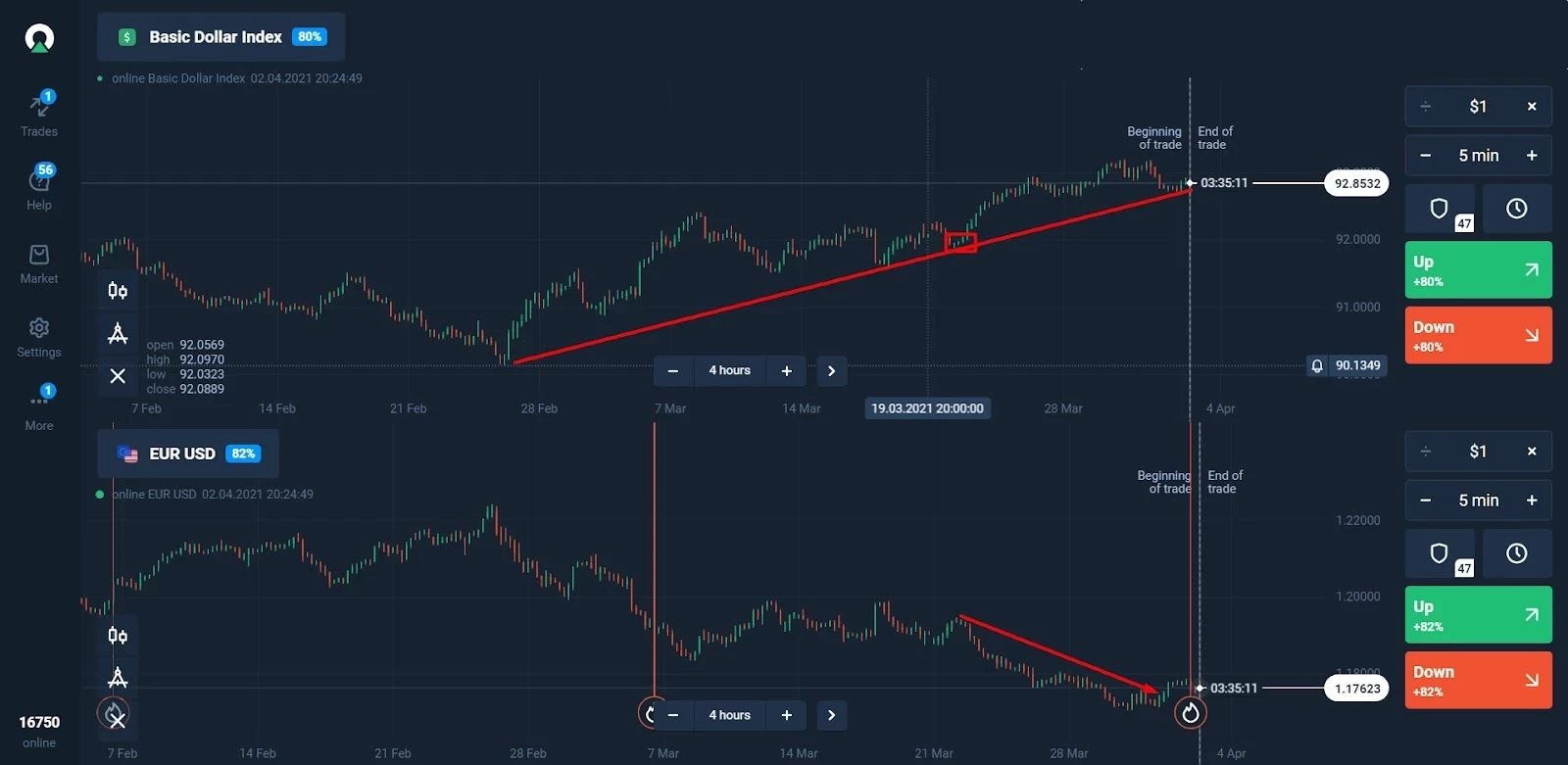
You will need to analyze charts to find entry points on high timeframes starting from 4 hours. The preferred timeframe is 1 day, which is why it is better to trade using Forex mode instead of FTT.
The most important thing to remember is that the Basic Dollar Index is primarily a macroeconomic indicator. It is used to assess the global state of the US dollar for higher timeframes and is often used as a complement to other fundamental analysis.











